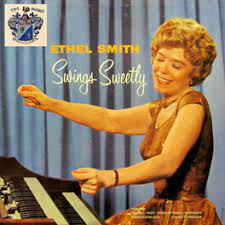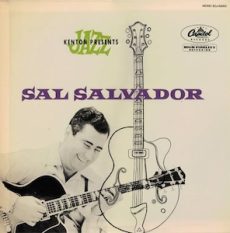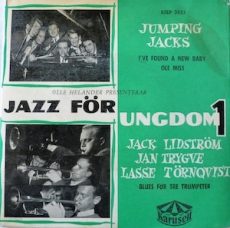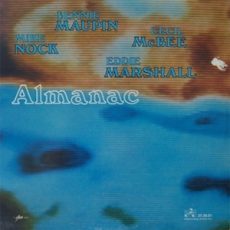
Daily Dose Of Jazz…
Ethel Smith was born Ethel Goldsmith on November 22, 1902 in Pittsburgh, Pennsylvania and began performing from a fairly young age. Traveling widely, after studying both music and several languages at Carnegie Institute of Technology, she became proficient in Latin music while staying in South America.
Smith performed in several Hollywood films such as George White’s Scandals and Melody Time. Her appearance in these films brought notoriety to her colorful, elaborate costumes, especially her hats.
Her rendition of Tico Tico became her best-known hit. She performed it in the MGM film Bathing Beauty in 1944, after which her recording reached the U.S. pop charts that November, peaking at #14 and selling nearly two million copies worldwide. Her other well known hits were Down Yonder and Monkey on a String.
Smith was a guitarist as well as an organist, and in her later years occasionally played the guitar live for audiences, but all her recordings were on the organ. She recorded dozens of albums, mostly for Decca Records.
Organist Ethel Smith, who became widely known as associated with Latin music, transitioned on May 10, 1996, at age 93 in Palm Beach, Florida.
More Posts: bandleader,history,instrumental,jazz,music,organ

Daily Dose Of Jazz…
Sal Salvador was born Silvio Smiraglia on November 21, 1925 in Monson, Massachusetts and began his professional career in New York City, New York. He eventually moved to Stamford, Connecticut.
In addition to recordings with Stan Kenton and with his own groups, Salvador can be heard in the film Blackboard Jungle, during a scene in a bar where a recording on which he is featured is played on the jukebox. He is also featured playing with Sonny Stitt in the film, Jazz on a Summer’s Day, at the Newport Jazz Festival.
He taught guitar at the University of Bridgeport in Bridgeport, Connecticut as well as at Western Connecticut State University in Danbury, Connecticut. He wrote several instruction books for beginning to advanced guitarists.
Guitarist and educator Sal Salvador transitioned on September 22, 1999 following a fight with cancer at the age of 73.
More Posts: bandleader,guitar,history,instrumental,jazz,music

Daily Dose Of Jazz…
Lasse Törnqvist was born Lars Törnqvist on November 18, 1935 in Bromma, outside Stockholm, Sweden. Between 1952 and 1957 he played traditional jazz with the Midnight Stompers. He took a music hiatus but picked up playing again in 1973 in more swing and mainstream influenced sextest and septets, like the Olle Orrjes Jazz Band and Lasse Törnqvist’s Blue Stars.
He experimented with small bands in order to achieve a more acoustic sound. During the 1980s he often played with a cornet and piano duo. In 1992 he put a trio together with guitar and bass which became the Sweet Jazz Trio.
Cornetist Lasse Törnqvist, at 98 years old, no longer plays.More Posts: bandleader,cornet,history,instrumental,jazz,music

Daily Dose Of Jazz…
Michael Anthony Nock was born September 27, 1940 in Christchurch, New Zealand. He began studying piano at 11 and attended Nelson College for one term in 1955. By the age of 18, he was performing in Australia and in Sydney he played in The Three Out trio with Freddy Logan and Chris Karan. They toured England in 1961 before he left to attend Berklee College of Music.
Nock was a member of Yusef Lateef’s group from 1963 to 1965. Three years later he became involved with fusion, leading the Fourth Way band for two years. For a decade beginning in 1975 he was a studio musician in New York City, then returned to Australia.
His 1987 album Open Door with drummer Frank Gibson, Jr. was named that year’s Best Jazz Album in the New Zealand Music Awards. The 2003 New Year Honours saw Mike appointed an Officer of the New Zealand Order of Merit, for services to jazz.
Currently residing in New South Wales, pianist, composer and arranger Mike Nock, who taught at the Sydney Conservatorium of Music until 2018, continues to perform with his trio, big band, and various one-off ensembles.
More Posts: arranger,bandleader,composer,educator,history,instrumental,jazz,music,piano

Daily Dose Of Jazz…
Clyde Lanham Hurley, Jr. was born on September 3, 1916 in Fort Worth, Texas. Self-taught, he learned to play the trumpet by playing along with Louis Armstrong records. He studied music at the Texas Christian University in Fort Worth from 1932 to 1936 where he participated in the school’s jazz band. He began his career working with territory bands.
In 1937, while drummer/band-leader Ben Pollack was touring through Texas he heard Hurley and invited him to join his orchestra where he soloed on So Unexpectedly. While on a touring stop with the band in Los Angeles, California he left to become a studio musician. He played with Paul Whiteman then with Glenn Miller. While with Miller he was one of the key soloists appearing on the band’s studio recordings and live performances throughout America.
Hurley played the trumpet solo on Miller’s In The Mood, Slip Horn Jive and Tuxedo Junction. Leaving Miller in 1940 he went on to work with Tommy Dorsey before joining Artie Shaw in 1941.After his stint with Shaw, he freelanced for the movie studios. In 1941, he played the trumpet track for the classic Walter Lantz cartoon Boogie Woogie Bugle Boy of Company B.
He worked for MGM from the mid-Forties to the end of the decade and for NBC from 1950 to 1955. During the late 1950s, Hurley played in Dixieland groups, recording with Matty Matlock’s Rampart Street Paraders. In 1954, he recorded live with Ralph Sutton and Edmond Hall at the Club Hangover. His studio work in the 1950s included sessions with Paul Weston. He soloed on Memories of You on Weston’s Solo Flight album.
Trumpeter Clyde Hurley, who was prominent during the big band era, transitioned on August 14, 1963 from coronary occlusion in Fort Worth.
More Posts: history,instrumental,jazz,music,trumpet



